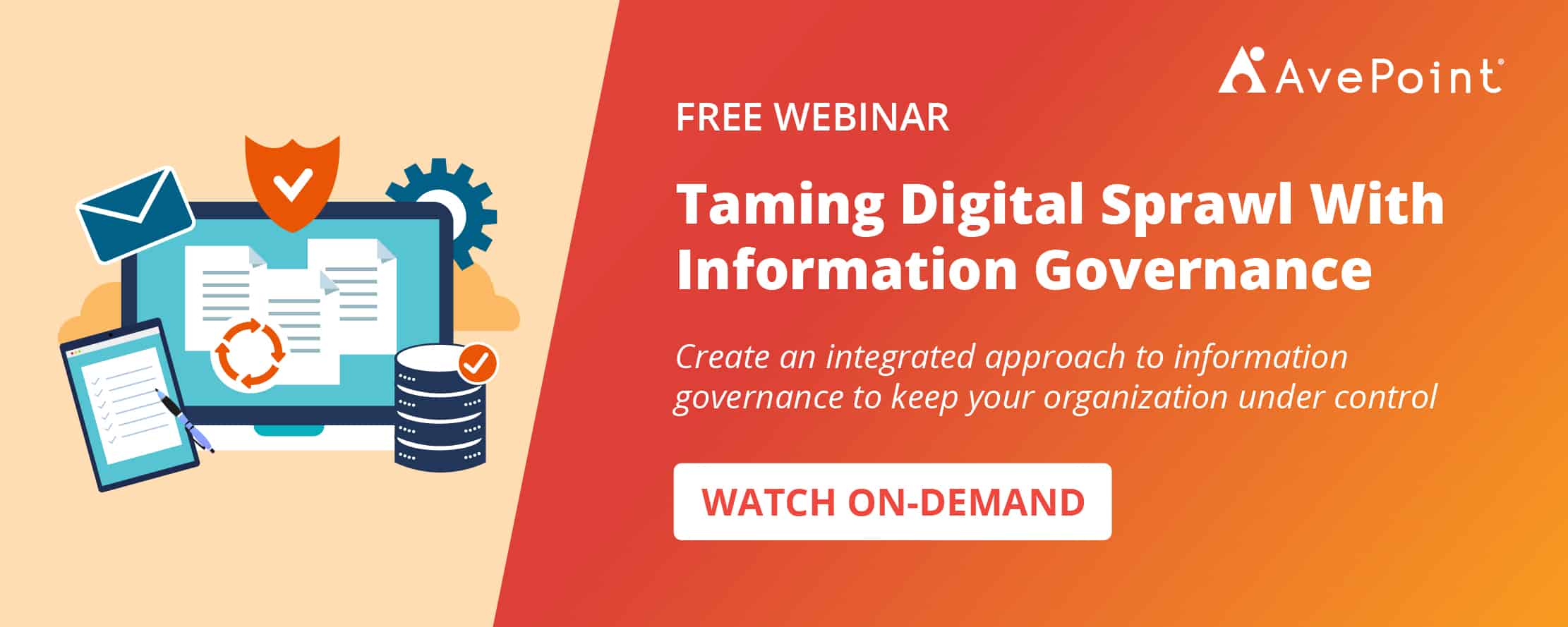The Advantages of Playing the Long Game in Information Management


This blog post is the second installment of a three-part series featuring the importance of information management and governance in today’s work landscape. Check out the first and second blog:
- Why It’s Time to Change Your Approach to Information Management
- 4 Reasons to Act Now on Information Governance
Growing data volumes, cloud storage costs, and Microsoft 365 user adoption are all keeping IT and business leaders awake at night. With these and other issues to contend with on a daily basis, short-term thinking can prevail as organizations look to keep the lights on, keep SharePoint storage below quota, ensure users have the systems they need to work, and that data is stored and retained in the event of a ransomware attack or legal requirement.
But applying a longer-term approach to information management can pay dividends in multiple ways.
According to Information Age, “anyone who manages an information management system for an organization will know that the needs of users evolve quickly, as the sources and types of information used for business decision-making proliferate”. So how do you break the cycle and manage your data more effectively across its lifecycle?
From short-term action to long-term vision
As IT teams continue to be asked to do more with less, any conversations about information management usually begin with cost reduction. With the right approach, this is certainly an achievable goal. But a proactive, longer-term approach offers many other advantages.
So, what are some of the practical steps you can take to start looking beyond storage quotas and toward that long game?
- Provide basic training to users on how to leverage M365 in the best way. You can also track user adoption, sentiment, and engagement to keep tabs on their progress and restructure your adoption plans accordingly
- Properly classify all data, with unstructured data stored in different platforms
- Balance retention policies on the platform (SPOL in particular) and ensure they are not heavily affecting storage costs
- Get your data hygiene under control by introducing auto-deletion, expiration, and automated archiving
- Control oversharing/exposure of data
- Provision your process with built-in lifecycle management tools
- Ensure all employees are trained on ‘when to use what’ and appropriately skilled to fulfill their role within the data management lifecycle
- Facilitate higher productivity and efficiency by enabling employees to easily store and retrieve the information they require during their daily activities
A new approach for a new era
Data is growing. User demands are growing. Ways of working are changing. Regulations are becoming tighter, and the penalties for non-compliance are getting more severe. The cost of storing data in the cloud is increasing. We could go on. But in short, ‘doing what you have always done’ with information management is a risky strategy in times of seemingly constant flux.
Understanding and evaluating your content enables you to see what data you have so you can begin to build a picture of the collaboration challenges you need to overcome. Carrying out an inventory of your different workspaces helps you to understand usage, purpose, ownership, size, and other key information. From this knowledge, you can implement a file plan and provide guidance to classify new and existing content.
As data progresses throughout its lifecycle, further actions can be taken to support the broader information management objectives. Older or less business-critical content can be moved to cheaper storage locations if needed while still maintaining oversight of it. Automated, data-driven decisions can also be taken on whether to keep, archive, or delete content based on its classification – and in a defensible manner.
Playing a long game with information management
With AvePoint Cloud Records, it is possible to change the way you manage your information for a new era by shifting your entire way of thinking. You can streamline your approach with a single-pane-of-glass solution that manages electronic and physical content from a simple, intuitive interface.
How much data do you create and store each year? Use our data storage calculator here.




